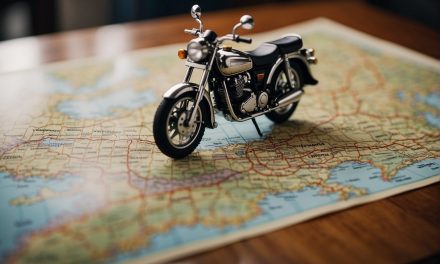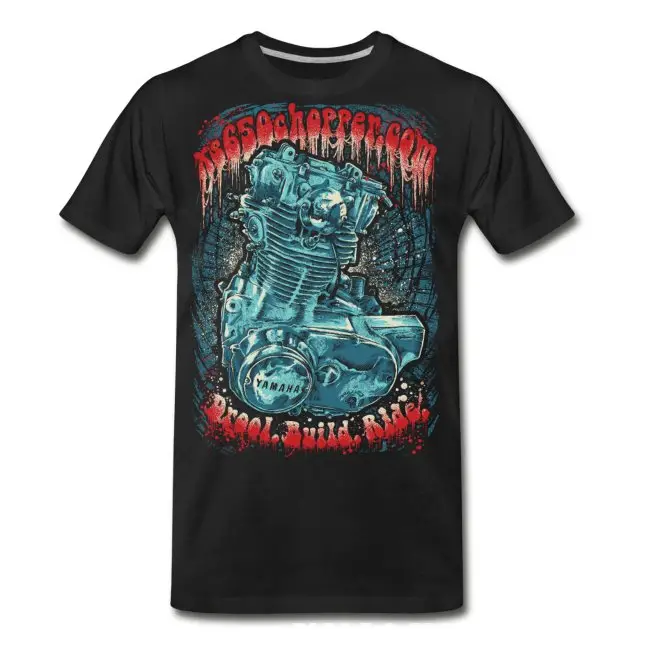Riding a motorcycle can be an exhilarating experience, but it’s not without its challenges. While many people dream of hitting the open road on two wheels, there are some things that no one tells you about riding motorcycles. Whether you’re a seasoned rider or just starting out, there are a few things you should know before hitting the road.
1. The Physical Demand

Riding a motorcycle may look easy and effortless, but it is actually physically demanding. When you ride a motorcycle, your body is constantly exposed to wind pressure, which can make you work hard, especially on a model fitted with a fairing. Here are a few physical demands to consider before you start riding:
- Body Positioning: Riding a motorcycle requires you to maintain a proper body position to avoid fatigue and discomfort. You need to keep your back straight, your arms relaxed, and your knees bent to absorb shocks and vibrations. This may take some time to get used to, but with practice, you’ll develop the muscle memory required to maintain a comfortable riding position.
- Core Strength: Riding a motorcycle requires you to engage your core muscles to maintain balance and stability. You need to keep your core muscles engaged to prevent fatigue and discomfort. Regular exercise to strengthen your core muscles can help you maintain a comfortable riding position for longer periods.
- Hand and Arm Strength: Riding a motorcycle requires you to hold onto the handlebars for extended periods. This can be tiring, especially if you’re riding on rough roads or in windy conditions. You need to develop hand and arm strength to maintain a firm grip on the handlebars and control the motorcycle.
- Leg Strength: Riding a motorcycle requires you to use your legs to control the motorcycle. You need to shift your weight from side to side to maintain balance and stability. You also need to use your legs to brake and shift gears. Regular exercise to strengthen your leg muscles can help you maintain control of the motorcycle.
2. The Intense Community

One thing that no one tells you about riding motorcycles is how intense the community can be. Whether you’re a seasoned rider or just starting out, you’ll quickly find that the motorcycle community is a tight-knit group of people who are passionate about their bikes.
One way to get involved in the community is to join a motorcycle club. These clubs are made up of riders who share a common interest in motorcycles and often organize group rides and events. Some clubs are more casual, while others are more structured and require members to follow certain rules and regulations.
Another way to get involved is to attend motorcycle rallies and events. These gatherings are a great way to meet other riders and learn more about the culture and history of motorcycling. From Sturgis to Daytona, there are plenty of events to choose from, each with its own unique vibe and atmosphere.
No matter how you choose to get involved, you’ll quickly find that the motorcycle community is full of passionate and welcoming people who are always happy to help out a fellow rider. Whether you need advice on gear or just want to chat about your favorite bike, you’ll find plenty of like-minded individuals who share your passion for motorcycling.
3. Weather Feels More Extreme

When you’re on a motorcycle, you’ll quickly realize that weather feels more extreme than it does in a car. You’re more exposed to the elements, and that can make a big difference in how hot or cold you feel.
In the summer, you’ll feel the heat more acutely than you would in a car. Even if you’re moving at a good clip, you’ll still feel the sun beating down on you. You’ll need to take extra care to stay hydrated and protected from the sun. Be sure to wear sunscreen and drink plenty of water.
In the winter, you’ll feel the cold more than you would in a car. Wind chill can make the temperature feel much colder than it actually is. You’ll need to dress in layers and wear appropriate gear to stay warm. A windproof jacket and pants, along with insulated gloves and boots, can make a big difference in how comfortable you feel.
It’s also important to be aware of weather conditions before you ride. Check the forecast and plan your route accordingly. If there’s a chance of rain, be sure to pack rain gear. If it’s going to be extremely hot or cold, consider postponing your ride until conditions are more favorable.
By taking the weather into account and being prepared for extreme conditions, you can enjoy your ride no matter what Mother Nature throws your way.
4. The Mental Focus Required

Riding a motorcycle requires a great deal of mental focus. In fact, it is one of the most important skills you need to develop to become a good rider. Here are a few things to keep in mind when it comes to mental focus and riding:
- Stay Alert: When you’re riding a motorcycle, you need to stay alert at all times. You need to be aware of your surroundings and anticipate what might happen next. This means keeping a close eye on other vehicles, pedestrians, and road hazards.
- Be Mindful: Mindfulness is another important aspect of riding a motorcycle. You need to be fully present in the moment and avoid getting distracted by your thoughts or emotions. This means focusing on your breath, your body, and the road ahead.
- Practice Visualization: Visualization is a powerful tool that can help you improve your mental focus. Before you go out for a ride, take a few minutes to visualize yourself riding safely and confidently. Imagine yourself navigating through traffic, taking corners smoothly, and arriving at your destination safely.
- Stay Calm: Riding a motorcycle can be stressful at times, but it’s important to stay calm and composed. If you start to feel anxious or overwhelmed, take a deep breath and remind yourself that you’re in control. Stay focused on the road ahead and trust in your skills and abilities.
- Stay Hydrated: Finally, it’s important to stay hydrated when you’re riding a motorcycle. Dehydration can cause fatigue, dizziness, and other symptoms that can impair your mental focus. Make sure to drink plenty of water before and during your ride to stay alert and focused.
5. Maintenance is More Hands-On

When it comes to motorcycles, maintenance is a crucial part of owning one. Unlike cars, motorcycles require more hands-on attention to keep them running smoothly. Here are a few things to keep in mind:
- Oil changes are more frequent: Motorcycles require more frequent oil changes than cars. This is because the engine and transmission share the same oil. As a result, the oil breaks down faster and needs to be changed more frequently. Be sure to check your owner’s manual for the recommended oil change intervals.
- Chain maintenance is essential: If your motorcycle has a chain drive, it’s important to keep the chain clean and lubricated. A dirty or dry chain can cause excessive wear and tear on the sprockets and chain, which can lead to costly repairs. Be sure to clean and lubricate your chain regularly.
- Tire pressure is critical: Proper tire pressure is essential for safe riding. Be sure to check your tire pressure regularly, especially before long rides. Underinflated or overinflated tires can affect handling and stability, which can be dangerous.
- Brake pads wear out quickly: Motorcycle brake pads wear out faster than car brake pads. This is because motorcycles are lighter and require more frequent braking. Be sure to check your brake pads regularly and replace them as needed.
- Electrical systems require attention: Electrical systems on motorcycles are more exposed to the elements than those on cars. As a result, they require more attention to keep them functioning properly. Be sure to check your battery, wiring, and other electrical components regularly.









